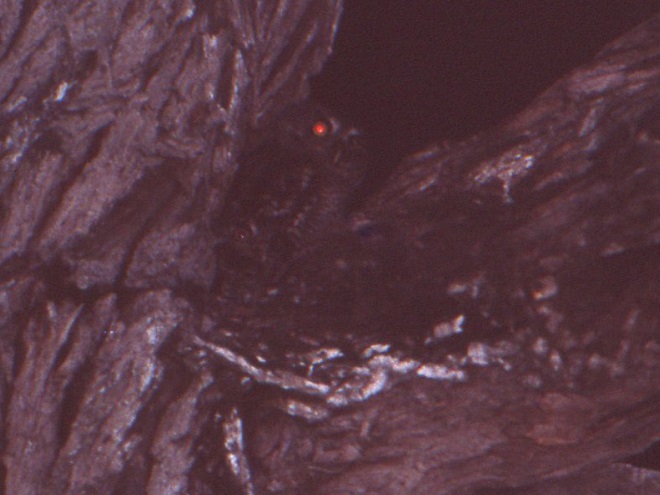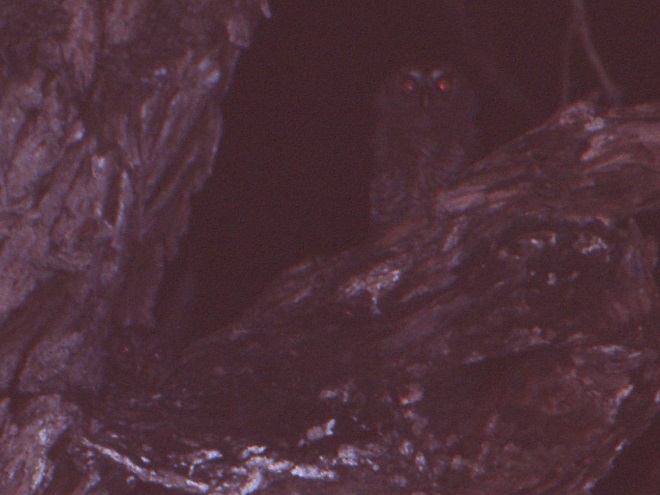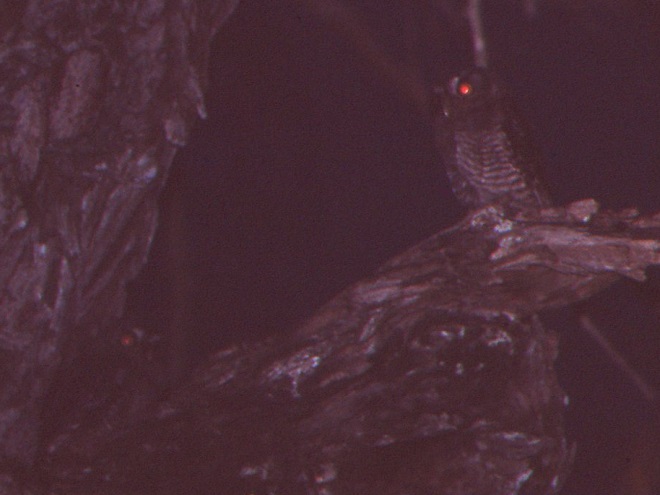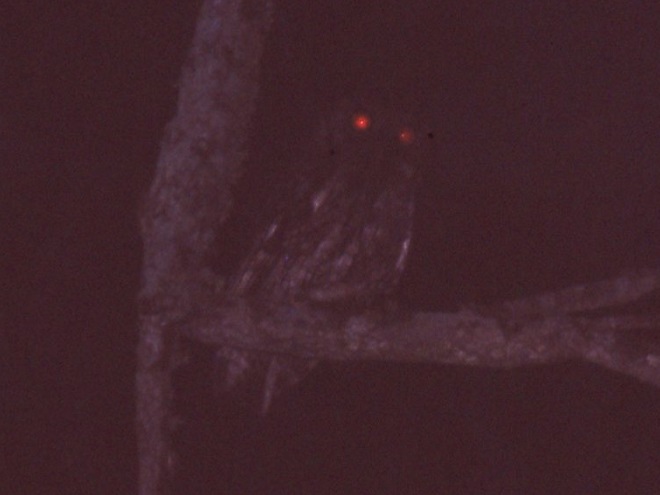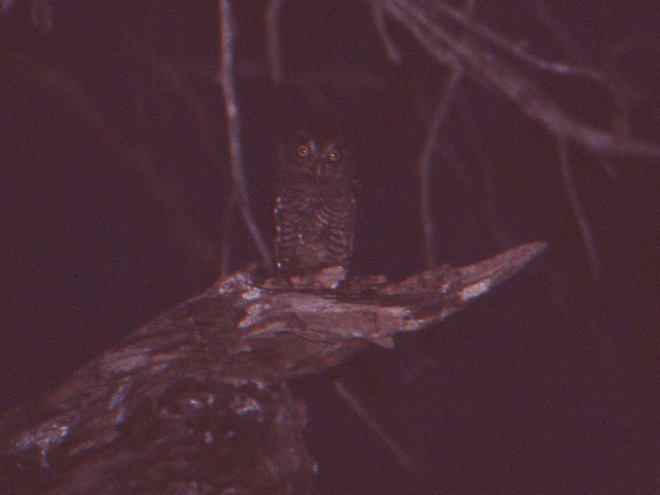Back in late May of 1983, four members of the Lancaster County Bird Club—Russ Markert, Harold Morrrin, Steve Santner, and your editor—embarked on an energetic trip to find, observe, and photograph birds in the Lower Rio Grande Valley of Texas. What follows is a daily account of that two-week-long expedition. Notes logged by Markert some four decades ago are quoted in italics. The images are scans of 35 mm color slide photographs taken along the way by your editor.
DAY FIVE—May 25, 1983
Bentsen State Park, Texas
Went to bed last nite about 11:30. Did not set the alarm. Very hot — Awoke at 7:30 A.M. We circled the campground and then drove to the river trail. We walked to the river, getting more lifers for Larry — Couch’s Kingbird, Olive Sparrow, and Groove-billed Ani. The Couch’s Kingbird is my first lifer of the trip. The Olive Sparrow has the same cadence as the Tennessee Warbler. We then checked the resaca and found a Least Bittern.
While checking out the cattails at the resaca, we failed to catch a glimpse of a Coues’ Rice Rat (Oryzomys couesi), a semi-aquatic mammal that lives only in the Rio Grande Valley and areas south into Central America. Instead we found an Eastern Fox Squirrel (Sciurus niger), a giant compared to the gray squirrels in Pennsylvania. Things really are bigger in Texas.
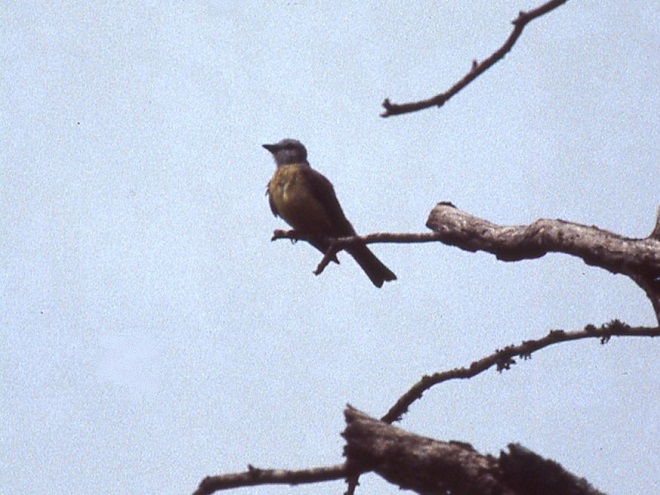
Back to our camp site for lunch, after paying for our stay at the office. P.M. — Put out corn and sunflower seeds and loafed all P.M. trying to get pictures. Larry had a lot of luck. I did not do so good.
Plain Chachalacas, White-winged Doves, White-tipped Doves, Great-tailed Grackles, and a Bronzed Cowbird stopped by to sample the seed offerings. The chachalacas and grackles created quite a racket. It’s a good thing we didn’t have any neighbors close by!
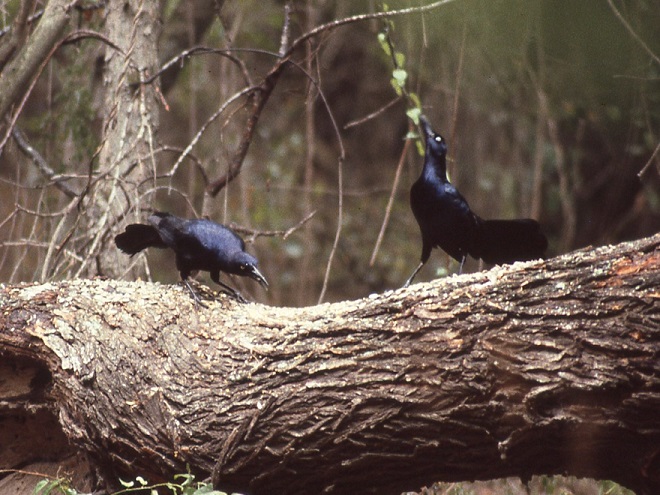
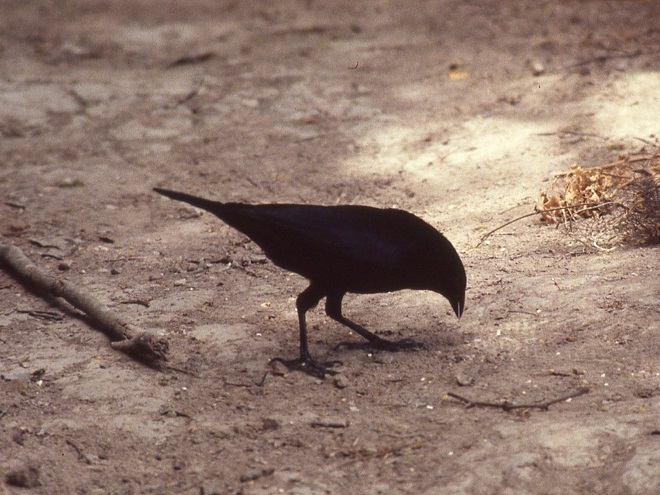
In nearby areas of the campground there were many species—Black-bellied Whistling Duck, Anhinga, Great Egret, Common Gallinule, Turkey Vulture, Yellow-billed Cuckoo, Golden-fronted Woodpecker, Ladder-backed Woodpecker, Eastern Kingbird, Brown-crested Flycatcher, Curve-billed Thrasher, Long-billed Thrasher (Toxostoma longirostre), Altamira Oriole, and Northern Cardinal.
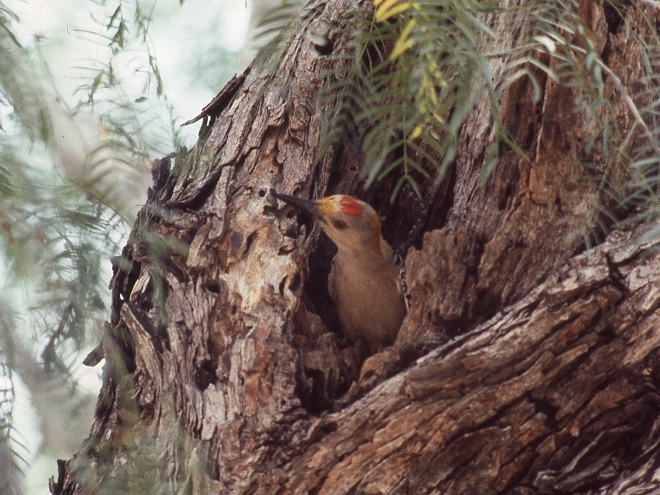
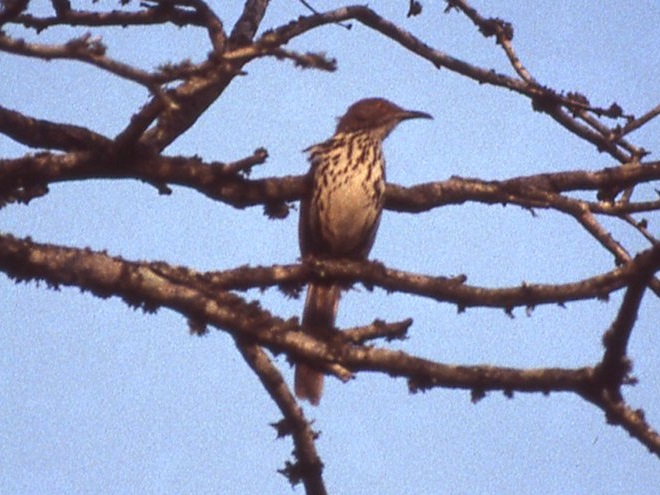
Rain is rare here — The rainy season produced no rain. Now a light rain is falling. The temperature dropped to 90° in the camper. One couple wanted to see anis. Larry picked one out 50 ft. from their campsite.
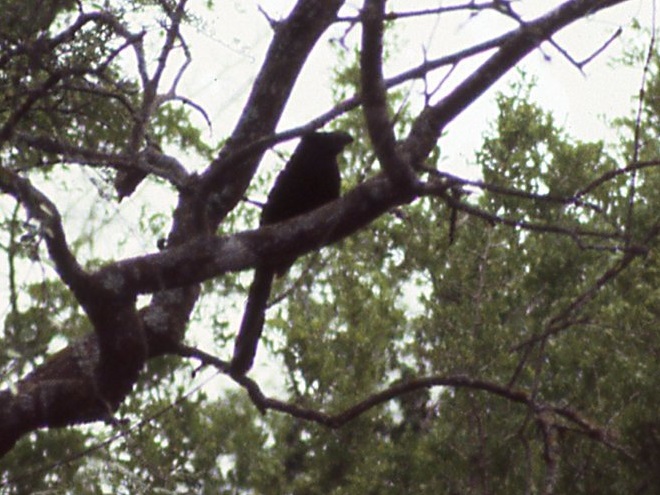
The rain cooled the air to make the evening tolerable, but we would pay for it tomorrow with an increase in the humidity.
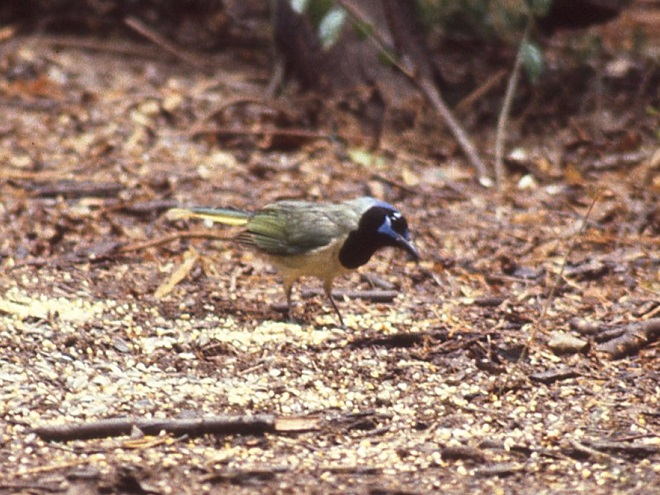
We paid for another nite and at dusk went to the Elf Owl tree where eventually 4 young came out and tried their wings and crawled around. The two adults flew in and Larry was ecstatic taking pictures with his strobe light. We met some people. One couple never saw Eastern Bluebirds. I gave him my card. Another couple pinpointed the owl tree.
This evening was certainly highlighted by the emergence of the young Elf Owls (Micrathene whitneyi) from their nest cavity. But in addition, we again heard the sounds of some of the other nocturnal birds found in the park—Common Nighthawk, Common Pauraque, and Eastern Screech Owl.
